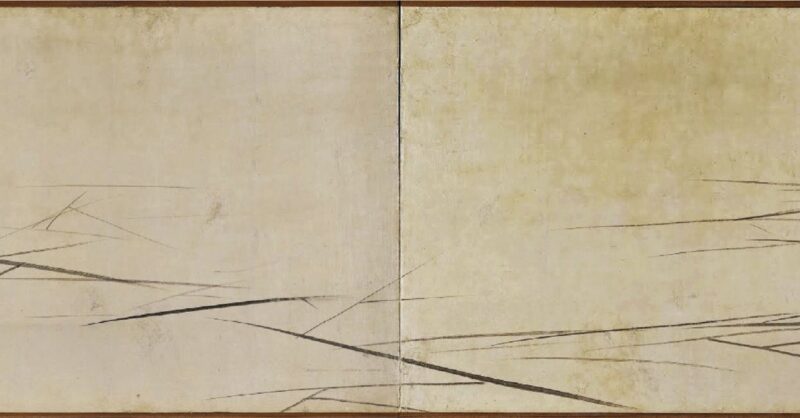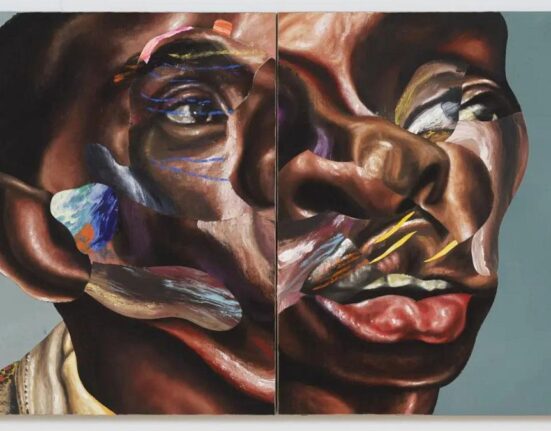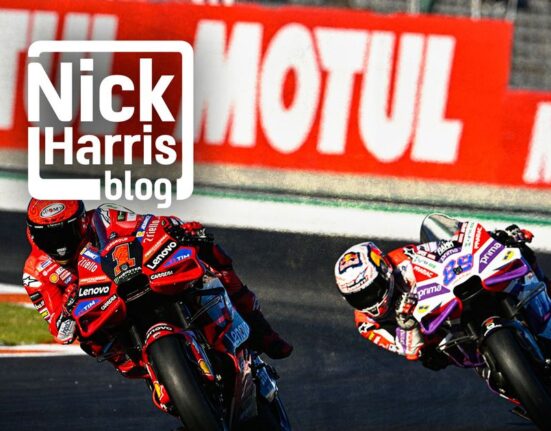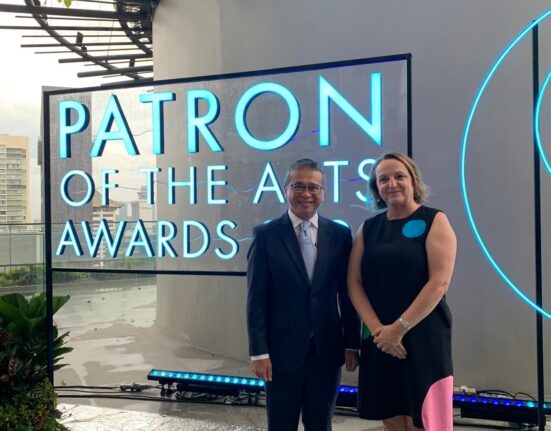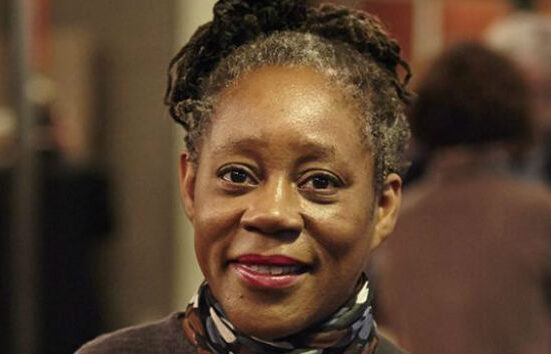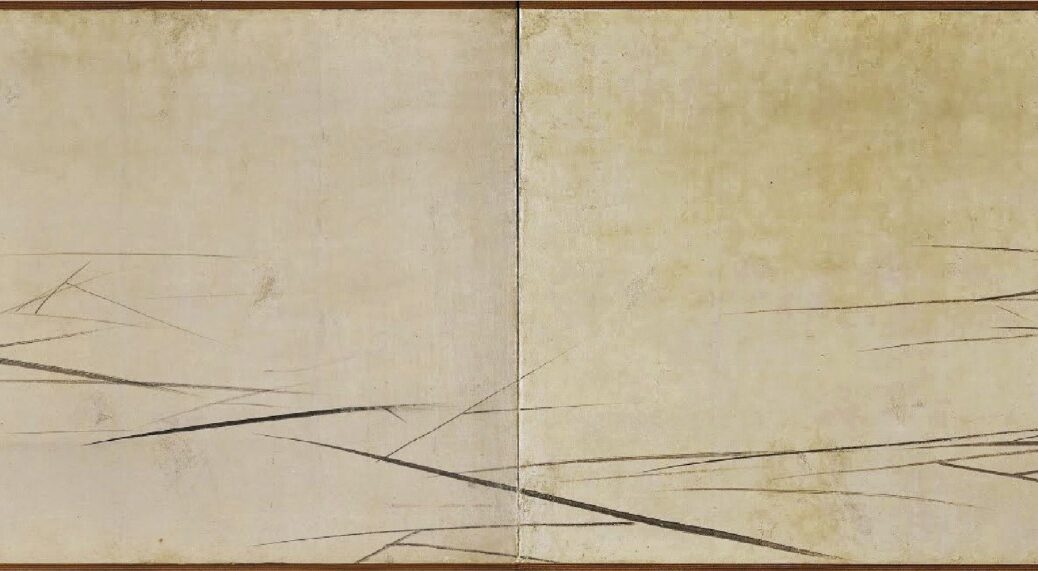
In 1639, in a panicky response to fears of cultural domination and the rise of Christianity, which had been spread by Spanish and Portuguese missionaries, Japan threw out the foreigners and suppressed their religion. The only Europeans allowed to remain were a colony of Dutch traders, confined to an island off Nagasaki to keep the taint of the West away.
This isolationist strategy was largely successful. However, some Western influences did slip through, including Dutch paintings and prints that made it across to the mainland. It was through these that the Japanese ukiyo-e (“pictures of the floating world”) artists first came into contact with the idea of vanishing-point perspective. This way of depicting receding space had been common in European art since the 15th century but was unfamiliar to artists whose painterly traditions ultimately derived from China. Gradually, ukiyo-e artists, who specialised in woodblock prints, began to experiment with the technique and apply it to their images of the refined cultural world of Edo (Tokyo): the prints became known as uki-e (“floating pictures”).
The influence of European art became more widespread in the early 18th century. After decades of proscription, the shogun – or military ruler – Yoshimune lifted a ban on studying foreign texts (although travel remained forbidden) and in doing so opened up a wide range of material on art, optics and architecture to Japanese scholars. It was into this climate of rangaku (“Dutch” or “Western” learning) that Maruyama Ōkyo was born.
[See also: Max Pechstein and the politics of paint]
Ōkyo was the son of an impoverished farmer and was brought up some 350 miles from Tokyo. His parents initially intended him to become a monk but instead he took on a variety of less spiritual roles: he worked as an apprentice to a kimono seller, as a designer of accessories for cosmetics dealers, and as a painter of dolls for a toymaker – for whom he also designed images for use in stereograph machines. Around the age of 16, he moved to Kyoto to train in the Kanō school of painting, responsible for the dominant style in 18th-century Japan. It specialised in both monochrome brush painting in the Chinese tradition (for a while, he would sign his name Chinese-style with one character) and more colourful work, and produced decorative art – screens, panels and hanging scrolls – for the castles of feudal lords.
Ōkyo learned all these traditional forms and painted both large byobu, or screens, as well as brushwork pictures and calligraphy – a skill he never truly mastered. His interest, however, lay in melding these various influences and mixing them with lessons taken from European copperplate engravings and illustrated books. He was drawn to realism – dragons, that staple of Japanese art, feature only rarely in his work – and was one of the first Japanese artists to make a practice of drawing from nature. He compiled sketchbooks filled with drawings of insects; relished flowers, trees and animals; and made drawings of birds, dogs, rabbits, fish and terrapins for use in his landscape pictures. Other sketchbooks, from the 1770s, are filled with images of the people and environs of Kyoto, and he made illustrations for anatomy books too. One apocryphal story describes a patron commissioning Ōkyo to paint the ghost of a dead family member and the image being so faithful that it leapt off the page and startled the painter himself.
Western optics also fascinated him. His mastery of perspective is already apparent in the stereograph designs of his apprenticeship, but he was familiar with the idea of the camera obscura and investigated the effects of mirrors too. Other works show him experimenting with European chiaroscuro – the manipulation of light and shade – and pursuing the effects made by holding his brush at different angles, rather than the approved perpendicular manner, and weighting it with pigment to give variety to his strokes.
Content from our partners
Less innovative painters more wedded to literary and Confucian painterly traditions disapproved both of Ōkyo’s mixed approach and his fidelity to quotidian nature. But numerous patrons, from both the merchant and noble classes, were seduced by his technically accomplished and often stylised visions of the natural world. It is easy to see why: in Peacocks and Peonies (1771) for example, both birds and flowers are observed from real entities, while the 12 cranes that fly, peck, stare and scratch on a pair of six-panel screens (circa 1770-72) are as tangible – as noisy and fluttering – as their gold-leaf background is decoratively ethereal.
Ōkyo’s exercises in bijin-ga – pictures of beautiful women, a favourite ukiyo-e motif – have none of the same particularity. Observable reality did lie behind his paintings of nudes. He was possibly the first Japanese artist to draw from the naked live model, although the subject, without the classical tradition that bolstered and dignified it in the West, was more often considered pornographic than a celebration of female beauty.
Ōkyo’s success – as well as his private commissions, he made paintings for temples and was retained by the emperor to help restore the imperial palace in Kyoto – meant that his example was quickly followed. “When Ōkyo came on the scene, sketching from life became popular, and all the paintings in Kyoto began being done by the same method!” wrote the poet Ueda Akinari in 1808. His style spread when he opened his own art school in Kyoto. The Maruyama School stressed the study of nature and, through his numerous students and the skills of his son Maruyama Ōzui, Ōkyo’s influence continued deep into the 19th century with artists such as Hokusai and Hiroshige.
At different points of his career, Ōkyo made a speciality of painting winter, perhaps because it set him a technical challenge. He painted screens with pine trees bowed under the weight of snow; Winter’s Day shows a gorge, bridge, trees and low hills enfolded in white; a wild boar snuffles its way through a chill forest; a tiger’s fur is ruffled by a glassy wind. Nowhere, though, was Ōkyo’s brilliance and observation better displayed than in this work, Cracked Ice, painted in the second half of the 18th century and now in the British Museum.
It is a low, two-part screen some six feet wide designed to be used as a background to the tea ceremony. It is painted on paper in ink with sprinkled mica powder for an icy sparkle. With extraordinary ingenuity and simplicity, Ōkyo conjures up the ice on a pond beginning to crack. His understanding of perspective wonderfully suggests the frozen water receding into mist and gives the illusion that the walls of the tea-room have disappeared to open up an infinite winter landscape. Even the most innovative of his European contemporaries, such as William Blake and Henry Fuseli, produced nothing as radical as this. Here is winter – palpable, silent, atmospheric, poetic, and dangerous too – summoned in just a couple of dozen strokes of the brush. Enjoy the view and enjoy the illusion, he says, but step carefully.
[See also: The secrets of frost]
This article appears in the 07 Dec 2023 issue of the New Statesman, Christmas Special

